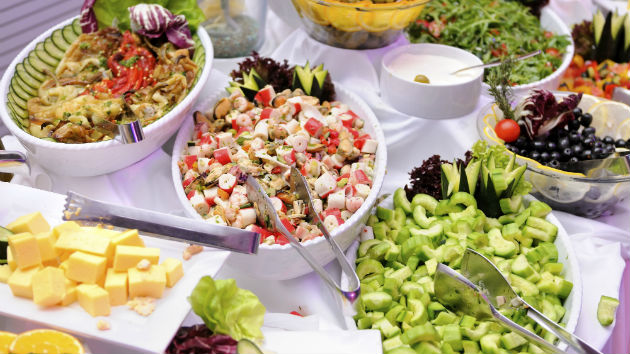Five Weird Food Traps That Are Making You Gain Weight
Published at
 iStock/Thinkstock(NEW YORK) — If you want to be skinny, think like a skinny person, says Brian Wansink, the mastermind behind a decade’s worth of innovative studies at Cornell University’s Food and Brand Lab.
iStock/Thinkstock(NEW YORK) — If you want to be skinny, think like a skinny person, says Brian Wansink, the mastermind behind a decade’s worth of innovative studies at Cornell University’s Food and Brand Lab.
Wansink and his team spend their time watching how people behave around food. By manipulating everything from plate size to overheard music to the color of utensils, Wansink said he has uncovered all sorts of every-day traps that prevent people from losing weight.
“You can drive yourself crazy by counting calories or make it easier by changing your environment,” he said.
Here are five of Wansink’s most surprising findings, along with some advice on how to use them to drop a few pounds without even trying:
1. The company you keep
In one of Wansink’s most recent studies, he asked an actress to don a “fat suit“ and scoop up salad and pasta off a buffet table as other people looked on. It didn’t matter what or how much the falsely plump actress piled on her plate. Simply being in her presence led other party-goers to eat up to 25% more calories than usual.
Wansink said that just being around someone overweight can lead to a loss of self-discipline, though he stressed that the point of his study was not to lay blame on individuals battling the bulge.
“This shows the importance of being thoughtful about what you order,” he said. “Decide what you want to eat before you go out and then stick with those choices despite other influences.”
2. Where you sit
Wansink’s group has done several observational studies looking at how people navigate a buffet table. Slim people, he found, are three times more likely to take a seat that faces away from the food compared to people who are above their ideal weight. Wansink says it’s an “out of sight, out of mind” thing.
“When you face the food you are constantly reminded how good it looks and how much other people are enjoying it. This gives you permission to eat more and go back for more,” he explained.
3. How you plan
In the same buffet study, Wansink observed that 73% of skinny people survey salad bar offerings before taking a plate versus simply grabbing a plate and moving through the line.
“Heavier people tended to pick up a plate and then look at food sequentially,” he said.
Overweight people didn’t take more trips for seconds and thirds but they did pile their plates higher the first time around because they didn’t take the time to scout out their favorites first, Wansink pointed out.
4. What’s in a name
You can be nudged into eating something healthier simply by tweaking its name, Wansink has found.
“Giving something a descriptive name increases the chances of someone trying it by 28% and they also rate it better tasting,” Wansink noted.
When you use a descriptor such as “crunchy” in front of the word carrot or “fresh” in front of the word salad, Wansink said it gets people to focus in on that attribute. And, he said, this works especially well with children.
In one study, christening the vegetable of the day “silly dilly green beans” led to 19% more elementary school children trying the dish and declaring it tasty – even though many of the kids weren’t yet old enough to read.
5. What you feel
It’s no secret that a grumpy mood can trigger overeating. But in one of his investigations, Wansink turned this idea around by asking people to express thanks before they sat down to a meal.
“Regardless of what they were feeling beforehand, people ate about 12% less if they said out loud one thing they were grateful for,” Wansink said.
A little bit of gratitude went along way. Not only did people eat less, they also made healthier choices, taking larger portions of veggies and smaller portions of sugar- and fat-laden foods.
Follow @ABCNewsRadio
Copyright 2014 ABC News Radio


